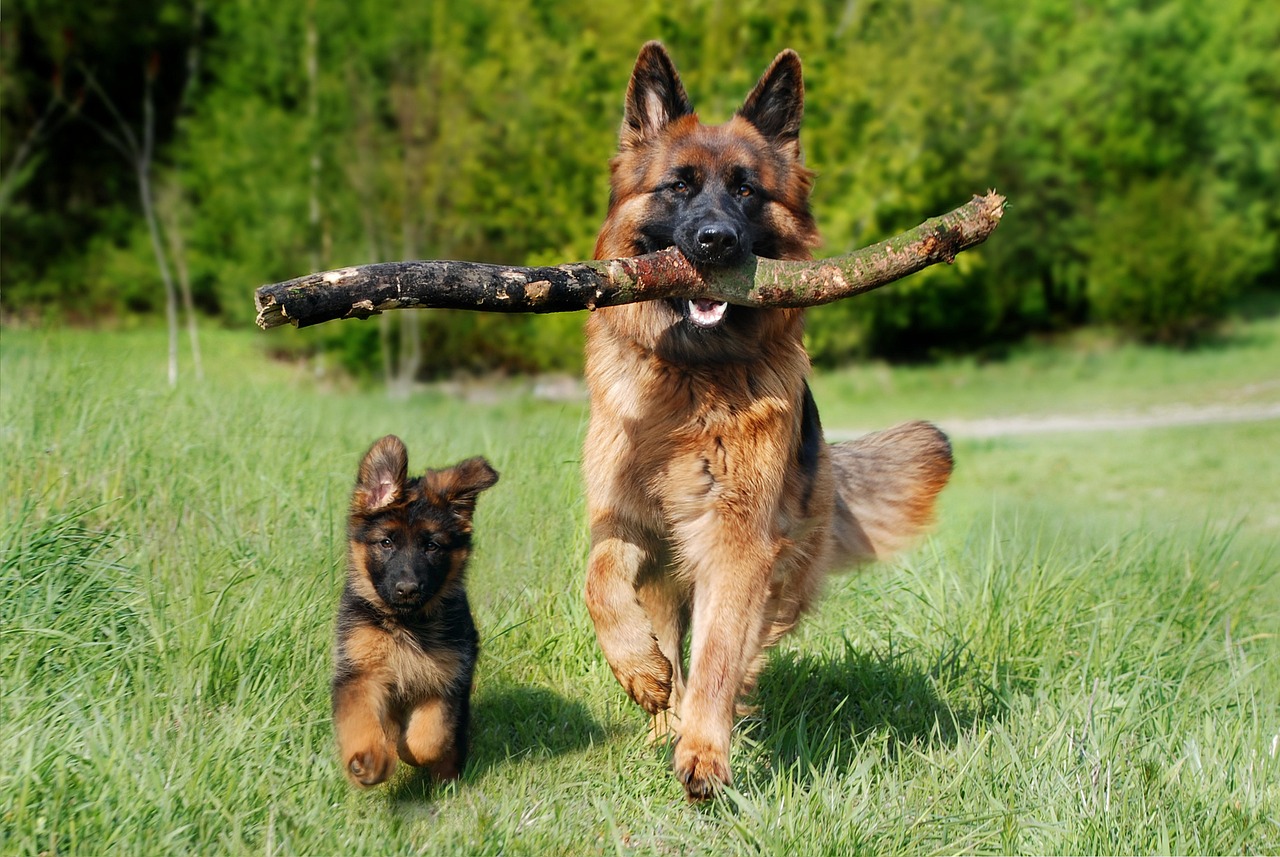As pet owners, it’s essential to recognize the signs of stress in our beloved dogs. Just like humans, dogs can experience anxiety and discomfort, which can affect their overall well-being. Understanding the causes of canine stress and how to alleviate it is crucial for maintaining a happy and healthy pet. In this blog, we will delve into the various factors that contribute to dog stress and offer practical tips for creating a more calming environment. Let’s explore in detail below.
Recognizing Signs of Stress in Dogs
Behavioral Changes
Dogs may exhibit a variety of behavioral changes when they are stressed. These can manifest as increased aggression, excessive barking, or withdrawal from social interactions. A once-friendly dog might suddenly become skittish or irritable, avoiding contact with family members or other pets. Additionally, some dogs may engage in destructive behaviors such as chewing furniture or digging excessively. Observing these shifts in behavior is crucial for pet owners, as they often signal that something is amiss in the dog’s environment or emotional state.
Physical Symptoms
In addition to behavioral changes, physical symptoms can also indicate stress in dogs. Common signs include panting, trembling, and pacing. Dogs under stress may also exhibit gastrointestinal issues like diarrhea or vomiting. Furthermore, you might notice changes in their eating habits; some dogs may refuse food altogether, while others might overeat as a coping mechanism. It’s essential to monitor your dog’s physical health closely since stress can lead to more severe health problems if not addressed promptly.
Vocalizations
Vocalizations serve as another critical indicator of canine stress. Dogs may whine, whimper, or bark more than usual when feeling anxious. The tone and frequency of these sounds can provide valuable insight into their emotional state. For instance, a high-pitched whine could indicate fear or discomfort, while constant barking might suggest frustration or an attempt to communicate distress. Understanding these vocal cues can help owners respond appropriately and provide the necessary comfort and support.
Common Causes of Dog Stress
Environmental Factors
The environment plays a significant role in a dog’s stress levels. Loud noises such as thunderstorms, fireworks, or construction work can create anxiety for many dogs. Additionally, changes in their surroundings—like moving to a new home or the introduction of new family members—can disrupt their sense of security and lead to stress. Even seemingly minor alterations in routine can have a considerable impact on a dog’s well-being.
Social Interactions
Social dynamics greatly influence canine stress levels as well. Dogs that have had negative experiences with other animals or humans may become anxious during interactions with unfamiliar individuals or pets. Socialization is vital for building confidence; however, poorly managed introductions can lead to fear and anxiety over time. Ensuring positive and controlled social experiences is essential for helping dogs feel secure and relaxed around others.
Health Issues
Underlying health issues often contribute to a dog’s stress levels without owners realizing it. Pain from injuries or chronic conditions like arthritis can make even routine activities uncomfortable for them. Additionally, hormonal imbalances and neurological disorders can affect a dog’s mood and behavior significantly. Regular veterinary check-ups are crucial for identifying any potential health concerns that could be causing undue stress.
Creating a Calming Environment
Safe Spaces
Designating specific areas within your home where your dog can retreat when feeling overwhelmed is beneficial for managing stress. This space should be quiet and free from distractions—a cozy corner with their bed, toys, and perhaps an item infused with your scent can help foster feelings of safety and comfort. Encouraging your dog to use this space during stressful situations will allow them to self-soothe and regain composure.
Consistent Routines
Establishing a consistent daily routine helps create predictability for your dog, which can significantly reduce anxiety levels. Regular feeding times, walks at the same hour each day, and scheduled playtime contribute to a sense of stability that many dogs thrive on. Predictability in their daily activities reinforces their understanding of what to expect from their environment.
Positive Reinforcement Techniques
Utilizing positive reinforcement techniques during training sessions not only strengthens the bond between you and your pet but also fosters confidence in your dog. Reward-based training encourages desired behaviors while minimizing fear-based reactions often associated with traditional training methods. Simple commands reinforced through treats or praise not only improve obedience but also contribute to overall mental well-being by providing mental stimulation.
Engaging Activities to Alleviate Stress
Interactive Toys
Providing interactive toys that challenge your dog’s mind can serve as an excellent outlet for reducing stress and boredom alike. Puzzle feeders require dogs to solve problems to access treats inside them, keeping them engaged while promoting healthy mental stimulation. Such activities help distract anxious dogs from stressful triggers in their environment while providing an enjoyable way to pass the time.
Regular Exercise
Physical activity plays a vital role in maintaining both physical health and emotional balance in dogs. Regular walks not only provide exercise but also allow dogs to explore their surroundings—engaging their senses while relieving pent-up energy that could otherwise translate into anxiety-driven behavior at home. Tailored activities based on your dog’s breed and energy level ensure they receive adequate exercise tailored specifically for them.
Meditation and Relaxation Techniques
Just as humans benefit from relaxation techniques such as meditation or deep breathing exercises, dogs too can find solace through calming practices designed specifically for them. Techniques like gentle massage have been shown to lower anxiety levels by promoting relaxation through touch—helping release tension built up during stressful situations while fostering trust between owner and pet.
The Role of Diet in Stress Management
Nutritional Support
A balanced diet is fundamental not only for physical health but also plays an integral role in managing canine stress levels effectively over time. Certain nutrients like omega-3 fatty acids found in fish oil have been linked with improved mood regulation among pets suffering from anxiety disorders—providing essential support toward enhancing overall well-being naturally without resorting solely on medications when faced with behavioral challenges.
Avoiding Triggers Through Diet Changes
Sometimes dietary ingredients can inadvertently act as triggers contributing toward heightened agitation within sensitive dogs’ systems leading them into states of distress upon ingestion! Identifying potential allergens within food sources through careful observation will enable owners tailor meal plans accordingly ensuring optimal nutrition without compromising comfort during mealtimes thereby preventing unnecessary bouts of stomach upset which often exacerbate underlying anxieties further down the line!
Supplements for Anxiety Relief
In addition to proper nutrition through regular meals provided daily there exists various supplements available designed specifically aimed at alleviating symptoms associated alongside heightened anxiousness experienced by our furry friends! Ingredients such as L-theanine (an amino acid) known commonly found within green tea has demonstrated effectiveness promoting calmness among anxious pups when administered correctly providing additional support alongside lifestyle adjustments made previously mentioned above!
The Importance of Professional Help When Needed

Coping Strategies from Trainers & Behaviorists
When managing persistent cases where typical interventions fail yielding little improvement it becomes paramount seek guidance professional trainers behaviorists specializing canine psychology! These experts equipped knowledge experience necessary dissect complex issues underlying distress experienced ensuring tailored approaches implemented effectively addressing root causes rather than merely masking surface symptoms encountered instead!
Veterinary Consultations for Health Assessments
If signs indicating prolonged states distress remain prevalent despite attempts rectify situation through environmental modifications consult veterinarian immediately rule out possible underlying medical conditions exacerbating issue! Comprehensive examinations paired diagnostic testing assist pinpoint precise nature ailments present enabling targeted treatment plans devised best suited individual needs ensuring prompt recovery restoring balance once lost!
Mental Health Professionals Specializing Animal Behavior
If necessary consider engaging mental health professionals specializing animal behavior who possess insights unique perspective alternative therapies available help alleviate chronic anxiety exhibited within pets unable cope otherwise! Together collaboratively develop strategies incorporating holistic approaches tailored specifically suit individual circumstances fostering healthier mindset ultimately improving quality life shared companionship enjoyed mutual affection nurtured throughout journey ahead together!
When wrapping up

Understanding and addressing stress in dogs is essential for their overall well-being. By recognizing the signs, identifying potential causes, and implementing effective coping strategies, pet owners can create a supportive environment that promotes emotional health. Whether through behavioral training, engaging activities, or professional assistance, taking proactive steps can significantly enhance a dog’s quality of life. Ultimately, fostering a strong bond built on trust and comfort will ensure a happier and healthier companion.
Reference materials
1. The importance of recognizing stress signals in dogs.
2. Common environmental factors that contribute to canine anxiety.
3. Ways to create a calming atmosphere for pets.
4. Engaging activities that help alleviate stress in dogs.
5. The role of proper nutrition and supplements in managing anxiety.
Summary overview
This guide emphasizes the significance of recognizing stress in dogs through behavioral changes, physical symptoms, and vocalizations. It outlines common causes of canine anxiety such as environmental factors, social interactions, and underlying health issues. By creating a calming environment, engaging in regular exercise, and ensuring proper nutrition, owners can help mitigate stress levels in their pets. Additionally, seeking professional guidance when necessary is crucial for addressing persistent issues effectively. Overall, a supportive approach fosters a healthier and more contented dog.






